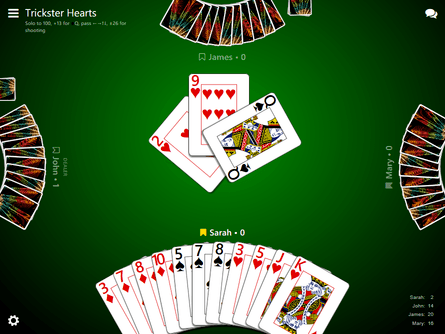
In this case, the dealer will sit out the round that was dealt, while the player to his right will play the role taken by the dealer in the three-player variant. The game can also be played by four players. The two defenders are not allowed to communicate in any way except by their choice of cards to play. At the beginning of each round, or "deal", one player becomes declarer and the other two players become the defending team. Skat is a game for three players, who are known as forehand, middlehand and rearhand, rearhand also being the dealer ( see picture). General principles įorehand, middlehand and rearhand in Skat Rules Note: Because of the many variations in the rules of Skat, the rules below are necessarily general, although rules not found in official German tournament play are marked as such. Skat is completely unrelated to an American game called Scat. The word scarto is still used in some other Italian card games to this day. The word Skat is a Tarok term derived from the Latin word scarto, scartare, which means to discard or reject, and its derivative scatola, a box or a place for safe-keeping. The current rules, followed by both the International Skat Players Association, German Skat Federation and British Skat Association, date from Jan. These were the first official rules finally published in a book form in 1888 by Theodor Thomas of Leipzig. Nevertheless, the rules continued to differ from one region to another until the first attempt to set them in order was made by a congress of Skat players on 7 August 1886 in Altenburg. The first book on the rules of Skat, Das Scatspiel: Nebst zwei Liedern, was published in 1848 by one of its inventors, secondary school teacher J. But the main innovation of this new game was that of the bidding process. He then made two discards, constituting the Skat, and announced a contract. In the earliest known form of the game, the player in the first seat was dealt twelve cards and the other two players ten each. It has become the most loved and widely played German card game, especially in German-speaking regions. It is based on the three-player game of Tarock, also known as Tarot, and the four-player game of Schafkopf (equivalent to the American game Sheepshead). Skat was developed by the members of a local Tarock club, the Brommesche Tarok-Gesellschaft between 18 in Altenburg, in what is now the State of Thuringia, Germany. John McLeod considers it one of the best and most interesting card games for three players, and Kelbet described it as "the king of German card games." History

A variant of 19th-century Skat was once popular in the US.

It is the national game of Germany and, along with Doppelkopf, it is the most popular card game in Germany and Silesia and one of the most popular in the rest of Poland. Skat ( German pronunciation: ), historically Scat, is a three-player trick-taking card game of the Ace-Ten family, devised around 1810 in Altenburg in the Duchy of Saxe-Gotha-Altenburg. Typical Skat trick from a French-suited packįrench, German or Tournament-suited "Skat" pack


 0 kommentar(er)
0 kommentar(er)
